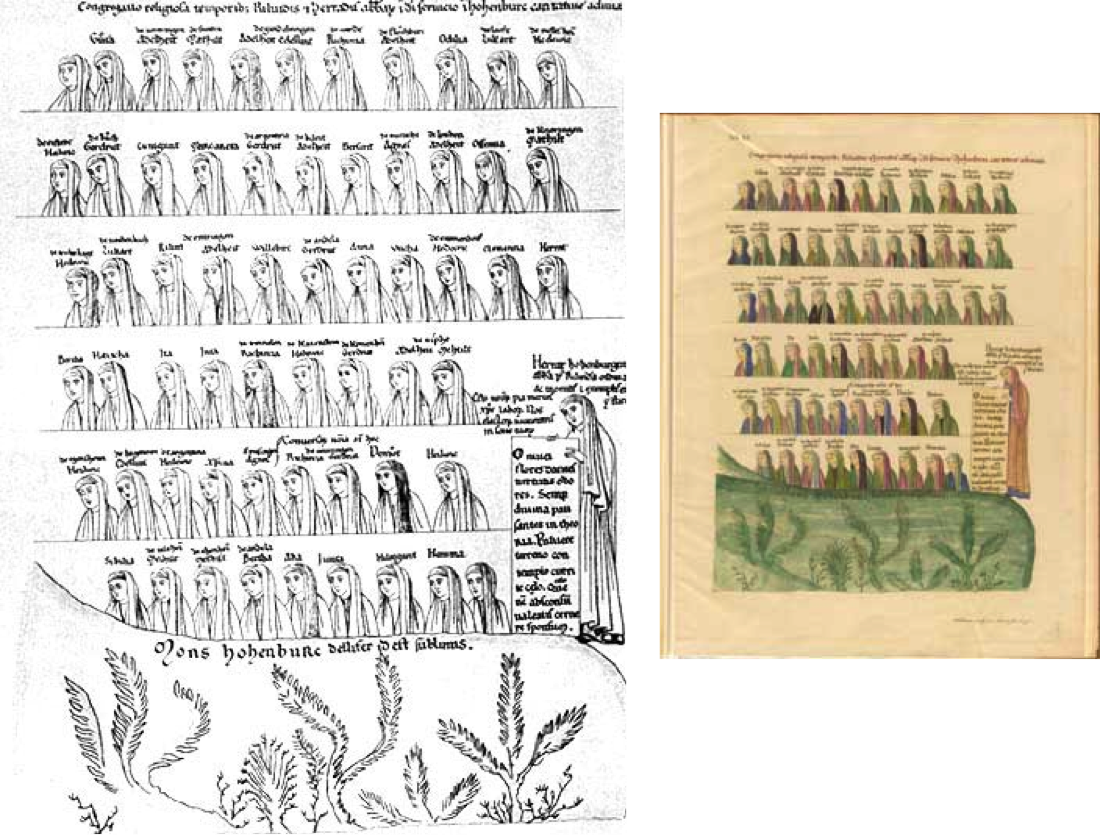In middle age, religion is a huge part of people's life. In the bible, God took a rib from men and use the rib to create women. So people believe that women are supposed to attached to men. Daughter are attached to father. Wife are attached to husband. Women are treated as a property of men instead of an independent individual. Even if women come from different classes. Some of them are rich and some of them are poor. All of them are supposed to serve their husbands and the whole family as a housewife. also women are supposed to totally "obey their husbands and their husbands could beat her if she didn't."(Guerrilla 22) Women have a limited right to choose their lifestyle. Some of them choose to join a convent and become a nun. This choice gives them a chance to learn how to read and write. the middle ages in 3.5 minutes is an interesting video shows the significant changes happens in Middle Ages.
When we come to Renaissance, the structure of feudalism goes down. People could raise their class by running a successful business. And if they do not like church they could write about it. Women also could abandon marriage in order to becoming a nun which means to marry with God and learn knowledge. But still compared with male artists in Renaissance we don't have that much female artists. when women get married with a men her properties would control by her husband. Even if her husband died she might not get back her dowry. these laws restrict women to learn knowledge and become an artist. However, "the city of Bologna stood out from the rest of Europe in its attitude toward women. Women were admitted to its university beginning as early as the 13th Century and were permitted to lecture there...there were more women artists in Bologna during this time than anywhere else in Italy." (Guerrilla 30) This is a progress for female artists.
"their(female artists) careers were made possible by birth into artist families and the training that accompanied it, or into the upper class where the spread of Renaissance ideas about the desirability of education opened new possibilities for women."(Chadwick 76) this shows that there still have lots of limits for women to become an artist. They still can't be treated as an individual. Compared to Middle Age, upper class women in Renaissance have a chance to learn knowledge. However, most of them are taught how to serve their families better and to obey their husbands' willing. Being a male artist's wife, sister or daughter is a way for women to be an artist. "Sofonisba Anguissola is a rare exception to this "rule" Her father which is a noble believes that women should be educated. so he supports his daughters and send Anguissola's drawing to Michelangelo."(Guerrilla 29)
This is one of Anguissola's self-portraiture. In this painting, She is wearing a black dress and working on her drawing. This painting shows ,as a woman, she is trying to hide herself behind her black dress. So she could let people to realize that she is not only a woman but also an artist. Also she is looking at herself in a female gaze. And the painting which Anguissola is working on shows the relationship between mother and children. Also she is a court painter and she got paid from her job. This is rare at that time.
In 19 Centuries, women who come from upper class need to work hard to take care of her housework but some of them were trying to join into political area. Middle or lower class women could work for themselves to sustain their lives. but still women can not control their dowry and still have limit rights. We could see the change from Middle Age to 19th. But we are still fighting for equality. Also lots of painting are about prostitutes and mistresses. This shows that women are not taken seriously. Even if famous female artist such like Rosa Bonheur had to fight hard to be taken seriously.
 |
| Rosa bonheur, the horse fair, 1887 |
 |
| Nameless and Friendless Emily marry osborn, 1857 |
Works Cited
Chadwick, Whitney. Women, Art, and Society. New York. Thames and Hudson,1990. Print.
The Guerrilla Girls' Bedside Companion to the History of Western Art. New York:
Penguin, 1998. Print.


No comments:
Post a Comment